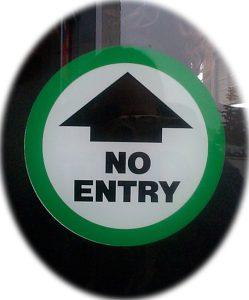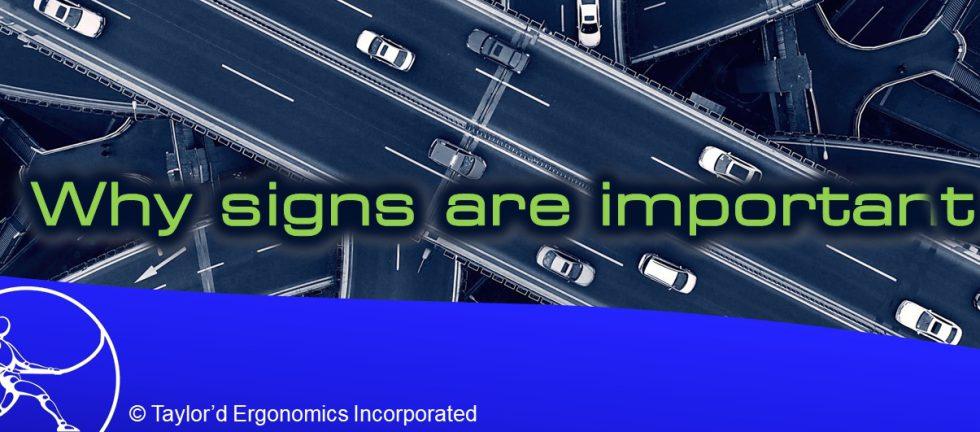In our daily lives, we make decisions using signs and cues. Sign design is a big deal in Human Factors/Ergonomics, and a topic I find fascinating as an ergonomist. This article looks at why signs matter, sharing some personal stories and exploring how they affect our daily lives.
Highway Driving: Finding your way with clear signs
Growing up and living in a rural area means I’ve done a fair bit of driving. But when it comes to fast traffic on the highway, I can get overwhelmed. Quick lane changes and figuring out the correct lane before a turn stress me out. Even with GPS helping out, having clear signs over the highway could make a big difference. I’ve often wished for a labelled arrow over every single lane during those moments of stress.
You Are Here: Technology makes finding your way easier
If you’ve ever been lost and late, you know how helpful maps in places like campuses, hospitals or malls can be. The “you are here” symbol is like a superhero in those moments. And now, technology is making it even easier, especially for people with vision or hearing challenges.
Where’s My Car? Making parking less stressful with signs
One of my biggest fears is parking my car in a big underground lot in Toronto and then not finding it later. (Yes, it has happened. The door I drove into was on a different street than the door I walked out of.) Taking a photo of where I park helps a bit, but labeling parking lot doors with street addresses would be a game-changer.
Distractions: Keeping roads safe from too many signs
On busy roads, lots of digital signs compete for our attention. But our brains can only handle so much. You’d think that warning people about fatalities at key locations would serve as a caution to drive safer. However, a study in 2022 found that signs reporting traffic deaths might actually make things more dangerous. It’s a reminder that we need to manage distractions on the road to keep everyone safe.
The Sign That Cried Wolf: Making construction signs more helpful
Construction signs are important for keeping workers safe, but sometimes they can be a bit confusing. If you’ve driven through a construction zone that was deserted for weeks, you might understand. Having a way to know if workers are around or not would make these signs more reliable.
Back, Back!: Navigating the internet like a pro
Think about navigating the internet like finding your way around a city. We’ve all learned what the little “x” in the corner means and how to use the “back” button. But if you haven’t used a computer for a while, it can feel like learning a new language. The digital world is always changing, and we’re being trained every day as we interact with it.
Green Means Go: Colours and symbols help us interpret the world

A local grocery store has a sign on the exit door that says “No entry.” I understand the words, but the accompanying symbol, an arrow in a green circle, still prompts me to try entering. We’ve been conditioned to interpret “green” as “go”, and “red” as stop. Upward arrows mean “advance”. Many other shapes, colours, and symbols infer meaning; using them in ways that contradict our understanding will lead to errors.
In conclusion, signs play a big role in our lives, often without us even realizing it. Sign designers can help users by considering how people will use the signs. How much time do they have to react? Is the sign intuitive, and does it conform with expectations? What other information is competing for attention? We can make things easier for everyone, by designing for the user, which is a recurring theme in ergonomics and human factors.
SEO Keywords: signs, highway driving, wayfinding, modern technologies, parking, distractions, digital displays, construction zone signage, internet navigation, user interfaces, user experience.
References:
Smith, J. (2021). Advances in Wayfinding Technology. Journal of Human Factors, 15(2), 123-135.
Johnson, M. et al. (2022). Impact of Warning Signs on Traffic Fatalities. Transportation Research, 28(4), 567-580.
Construction Safety Association. (2019). Guidelines for Effective Construction Zone Signage.


